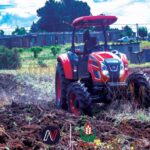Ntsoaki Motaung
The scourge of poverty heightened by the Covid-19 pandemic over, and above the disaster scare as a result of ongoing torrential rains sweeping throughout the country, has placed the lives of some 338 000 at the brink hunger between now and March, the Disaster Management Authority (DMA) revealed.
‘Makhotso Mahosi, the DMA Deputy Manager indicated that, seven districts of Berea, Maseru, Mafeteng, Quthing, Mokhotlong, Thaba Tseka and Qacha’s Nek are most hit hence the vulnerability.
“One of the factors that put the seven districts in exposure is the loss of money to sustain households from South Africa as a result of job losses brought about by Covid-19 related challenges,†Mahosi said.
She indicated that, the Lesotho Vulnerability Assessment Committee (LVAC) has made recommendations to solve the situation which include food subsidy by government, saying they have already bought food products which include beans and maize from Basotho farmers amounting to M11 million.
According to Mahosi, this was done as one of the recommendations of LVAC in 2020 when the pandemic first hit.
According to the Integrated Food Security Phase Classification (IPC) Acute Food Insecurity analysis, about 179,000 people, 12% of the population in rural areas of Lesotho, experienced acute food insecurity between November and December 2021.
Only three districts; Botha-Bothe, Leribe, Mohale’s Hoek, out of the analysed were classified in IPC Phase 2, being stressed, while the rest are classified in IPC Phase 3, being in Crisis, in this period.
“From January to March 2022, around 338,000 people, 22% of Lesotho’s population, are projected to be in IPC Phase 3 or above, meaning in Crisis or worse state, and require humanitarian action to reduce food gaps, protect, restore livelihoods and prevent acute malnutrition,†the IPC report indicated.
“Although heavy rains destroyed some crops in January 2021, causing waterlogging in some parts of the country, Lesotho registered an improvement in crop production this year due to the good seasonal rainfall performance, after three consecutive years (2018, 2019 & 2020) of poor agriculture production,†Mahosi said.
She added that crop production is therefore expected to boost the economy to a moderate growth of 2.6%.
“The increase in crop production also resulted in improved household food access. However, some poorer households across all livelihood zones are already experiencing food consumption gaps during the LVAC analysis period, which is normally the lean season in Lesotho.
“The unfavourable food insecurity status is also as a result of prices of food that remain higher compared to both 2020 and the 5-year average. In the projected period, food prices are expected to remain high,†Mahosi said.
Summary
- The scourge of poverty heightened by the Covid-19 pandemic over, and above the disaster scare as a result of ongoing torrential rains sweeping throughout the country, has placed the lives of some 338 000 at the brink hunger between now and March, the Disaster Management Authority (DMA) revealed.
- “One of the factors that put the seven districts in exposure is the loss of money to sustain households from South Africa as a result of job losses brought about by Covid-19 related challenges,†Mahosi said.
- “From January to March 2022, around 338,000 people, 22% of Lesotho’s population, are projected to be in IPC Phase 3 or above, meaning in Crisis or worse state, and require humanitarian action to reduce food gaps, protect, restore livelihoods and prevent acute malnutrition,†the IPC report indicated.

Your Trusted Source for News and Insights in Lesotho!
At Newsday Media, we are passionate about delivering accurate, timely, and engaging news and multimedia content to our diverse audience. Founded with the vision of revolutionizing the media landscape in Lesotho, we have grown into a leading hybrid media company that blends traditional journalism with innovative digital platforms.







